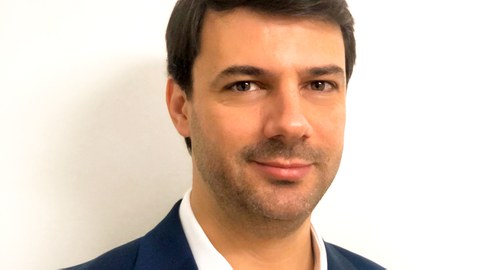Dec 17, 2019
Humboldt Fellow Bruno Henriques at LMO
Prof. Dr.-Ing. Bruno Henriques has received the Alexander von Humboldt Fellowship and is starting his research work at the TU Dresden Professorship for Laser-based Methods of Large-Area Surface Structuring. He will spend the next 18 months investigating the laser processing of biomaterials to improve the compatibility of dental implants with his work. The 37-year-old Portuguese is an assistant professor in mechanical engineering at the University of Santa Catarina in Florianópolis, Brazil.
At the TU Dresden, Prof. Henriques will dedicate himself to the project "Development of direct laser interference-structured multifunctional zirconium oxide bio-surfaces". The aim of the research project is to develop multifunctional surfaces on bioceramics in order to improve their mechanical and biological properties, taking advantage of the versatility of direct laser interference patterning (DLIP). "I want dental implants to integrate faster, last longer and also have an antibacterial effect. These are the major problems facing dental prosthetics today," says Henriques.
Zirconium oxide is a popular but also expensive ceramic for dental implants and a real alternative to titanium and its side effects. Henriques' task is to process the surface of the dental implants with a laser in such a way that a biological reaction is triggered between the tooth replacement and the bone. To do this, he has to find the right surface structure, which can be up to ten times smaller than a human hair. With laser-based procedures, zirconium oxide can be processed quickly, over large areas and at low cost.
"I came to Dresden because the expertise of my host, Professor Andrés Lasagni, in the field of direct laser interference patterning is unique," says Henriques. "And because Dresden is a great city."
Henriques studied mechanical engineering at the University of Minho in Portugal, where he graduated in 2006 and received his doctorate in 2012. He was already working on dentures while writing his doctoral thesis. Afterwards, his research work focused on the production process of biomedical materials.

